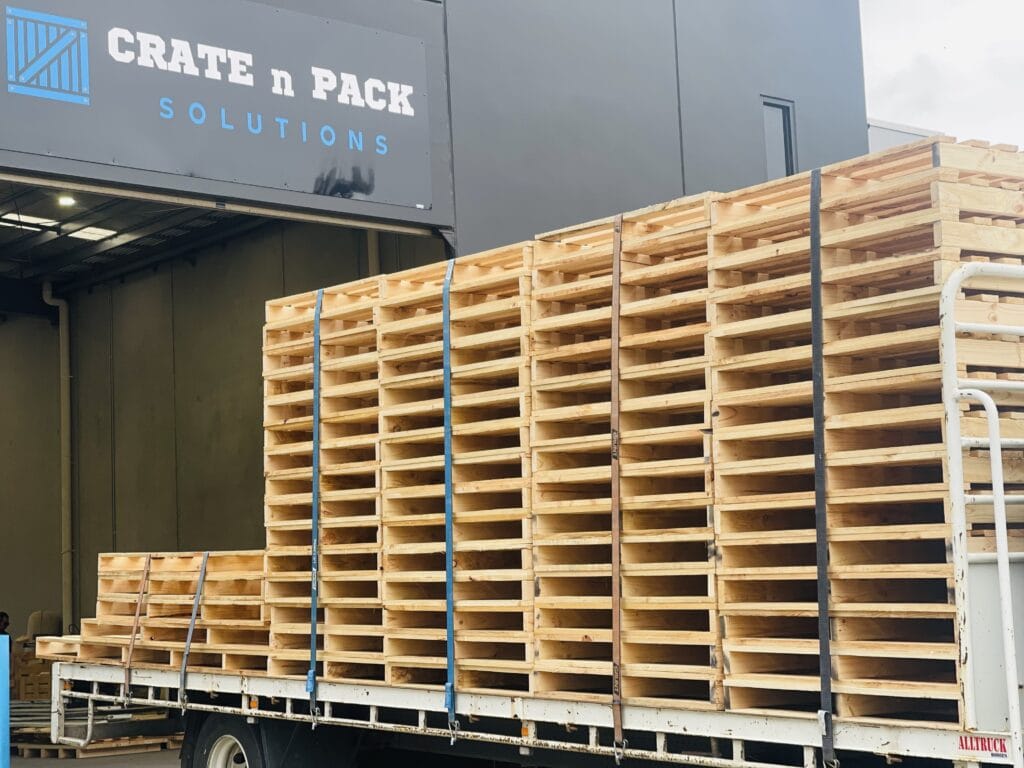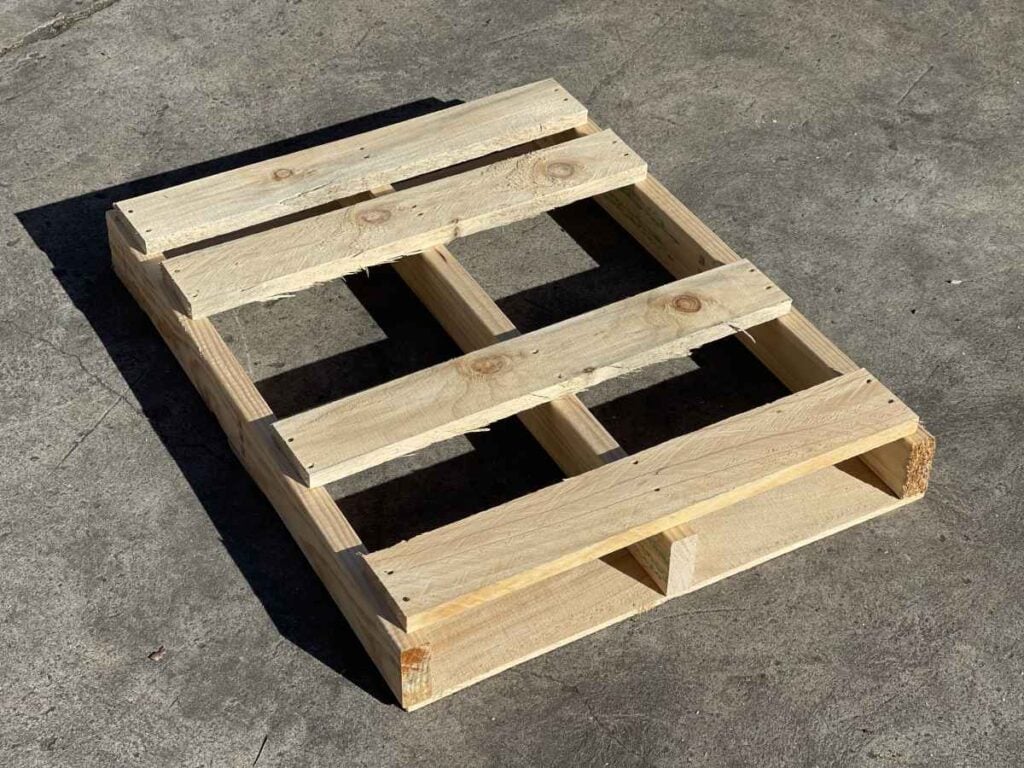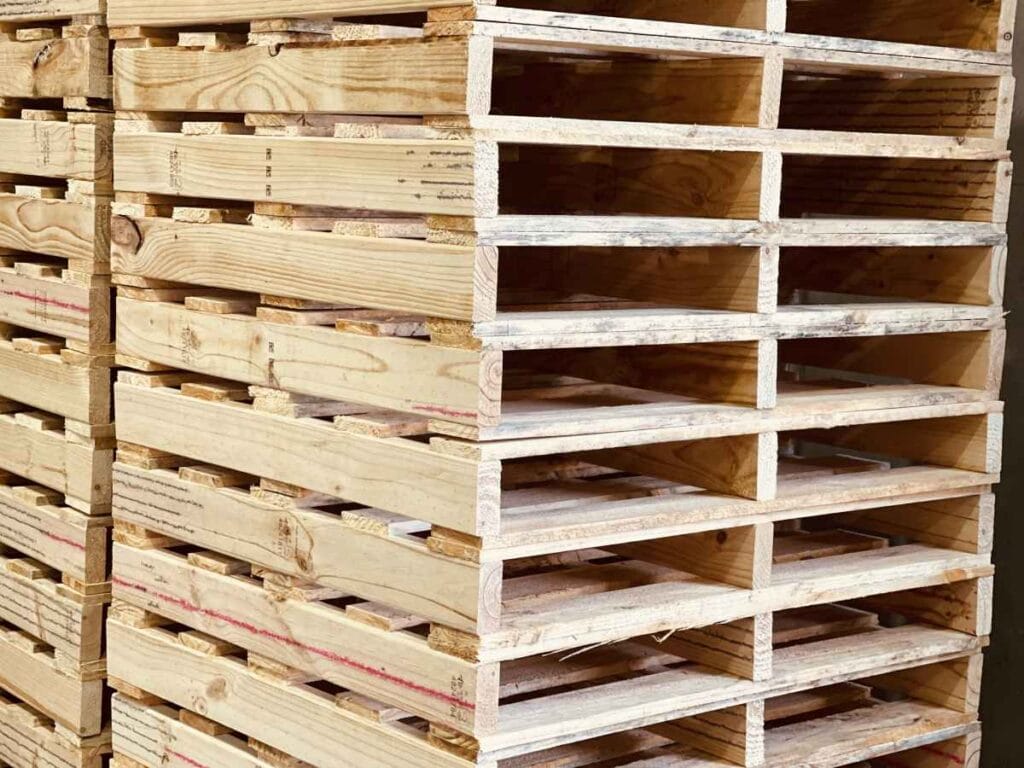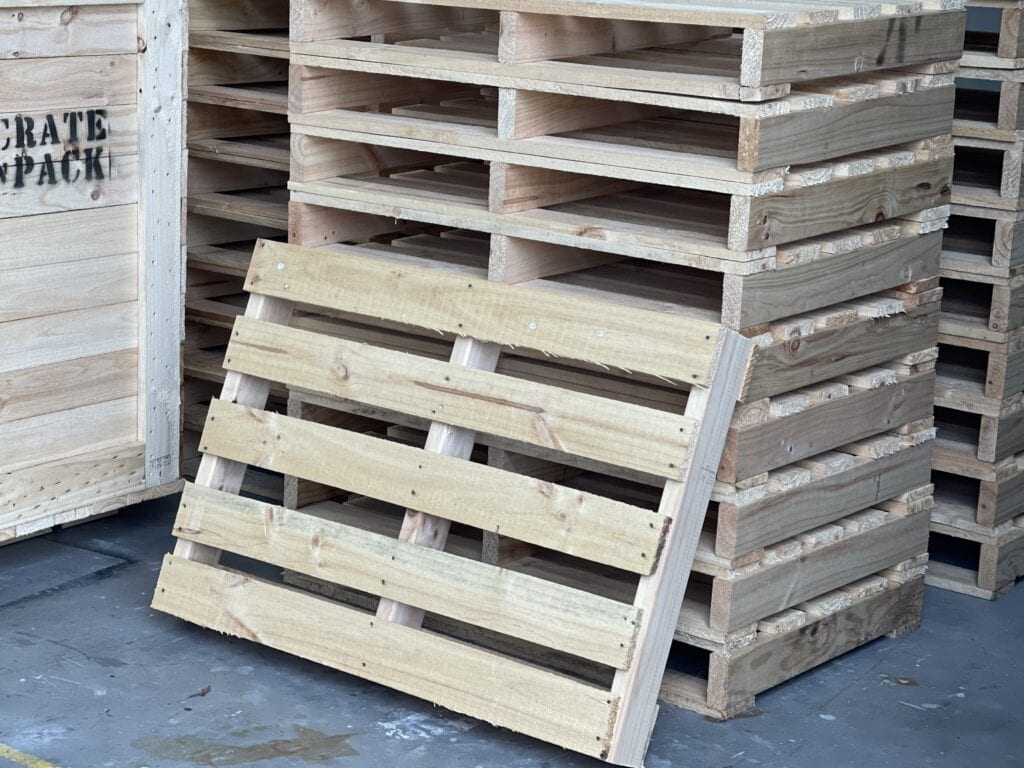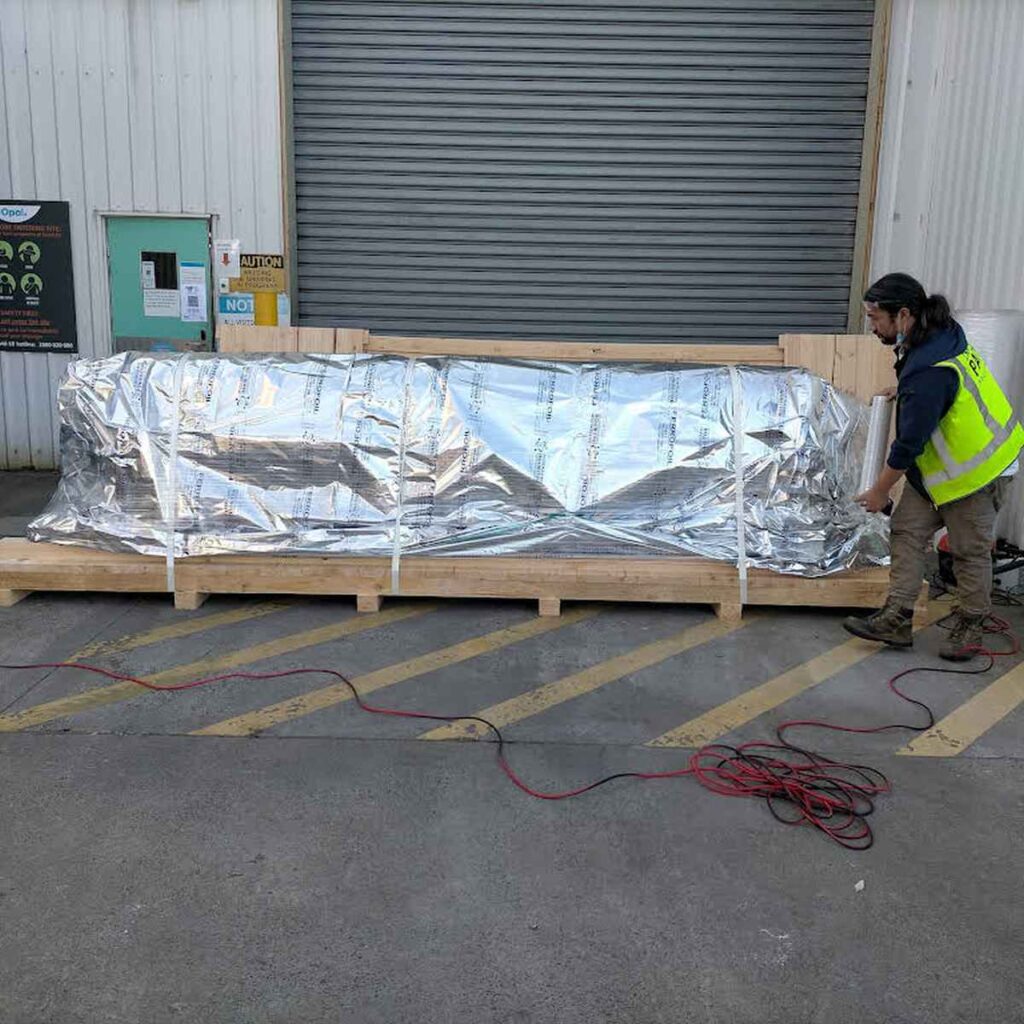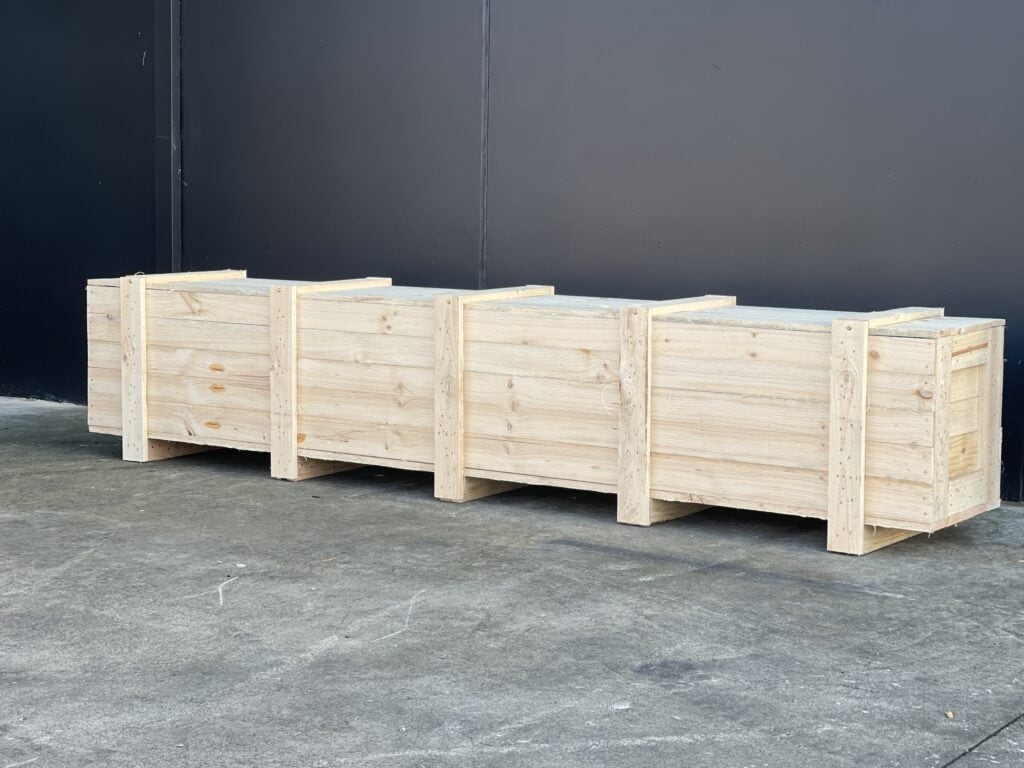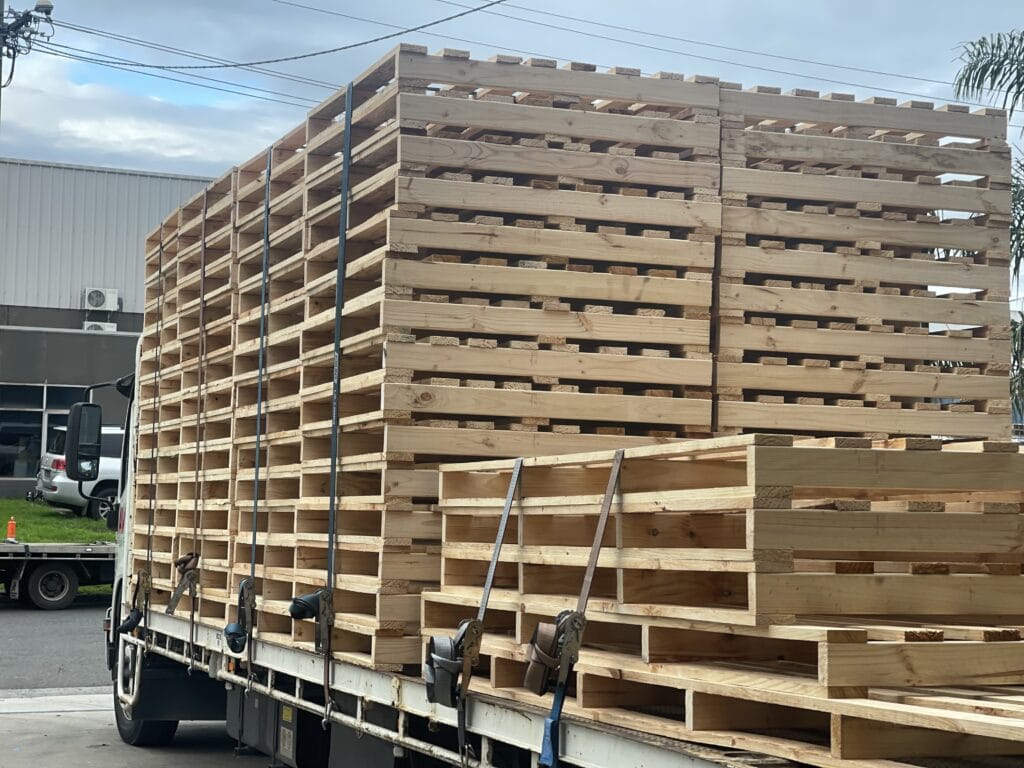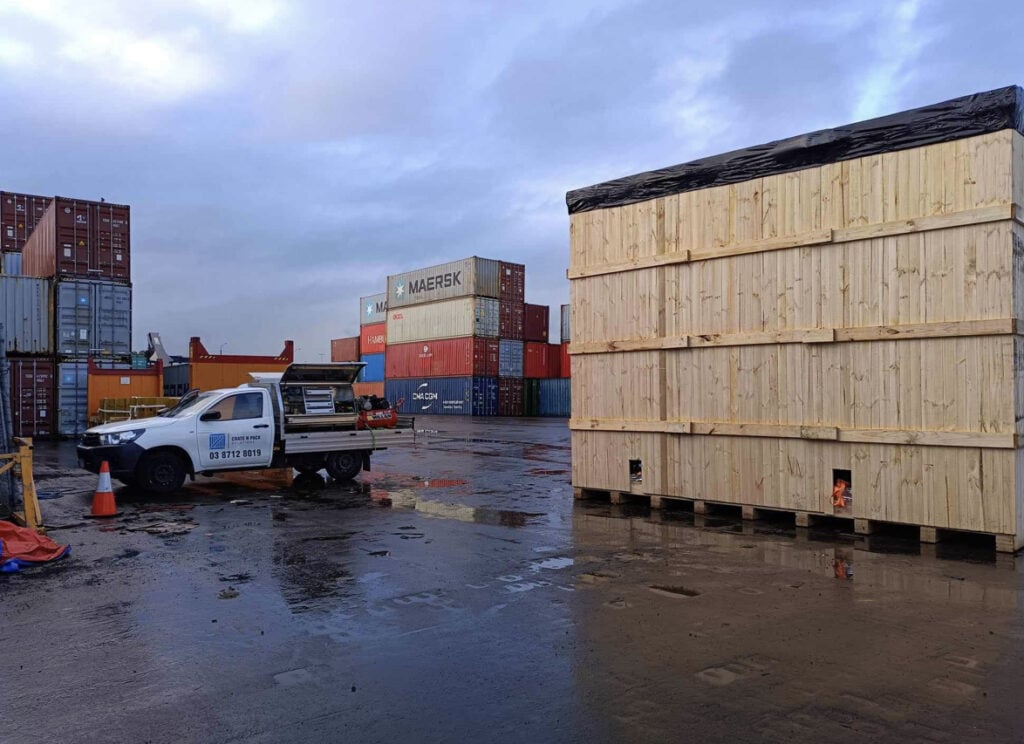Unassuming as they may seem, wooden pallets serve a crucial function in the logistics and supply chain management world by facilitating the safe and timely transfer of goods between different sectors.
These unassuming buildings are crucial to the world's transportation and storage networks. Wooden pallets are crucial because they improve the security, efficiency, and longevity of many supply chain processes.
Wooden pallets are advantageous because of their resilience and capacity to support weight. Pallets like this are built to last through shipping, stacking, and storage without damaging the products on them.
They're well-made, so your goods will stay undamaged in transit, saving you money on claims and replacements. Further streamlining logistics and reducing the need for human labour is the fact that wooden pallets are compatible with a broad variety of handling equipment, such as forklifts, pallet jacks, and conveyor systems.
The use of wooden pallets helps keep supply chain costs down.
Businesses might save money by purchasing them because they are easily produced and widely available. In addition, wooden pallets can usually be repaired, meaning that worn or broken pieces can be replaced, so prolonging their lifespan and decreasing the frequency with which they need to be changed.
This low-cost method is consistent with eco-friendly principles because it reduces waste and conserves natural resources.
Wooden pallets are also environmentally friendly because they can be recycled and reused in a variety of ways to create new wood-based products.
Wooden pallets have eco-friendly benefits in terms of longevity. They are often made from wood that has been harvested in a responsible manner, making them an eco-friendly option. Wooden pallets are non-toxic and biodegradable, making them an eco-friendly disposal option.
Wooden pallets can be reused and recycled multiple times, reducing the need for new lumber and contributing to the prevention of deforestation. Wooden pallets are in line with initiatives to lessen the negative impact on the environment caused by the logistics industry.
What Is a Pallet?
The pallet is a flat framework used as a foundation for the unitization of commodities in the supply chain. Pallets are often a type of tertiary packing. For the purposes of constructing, storing, stacking, managing, and transporting items as a unit load, a pallet is defined by the MH1-2016 standard as "a portable, horizontal, rigid, composite platform, often equipped with a superstructure." The component that rests atop the pallet foundation is called the superstructure.
Pallets serve as a standard platform upon which goods can be stacked, stored, protected, and transported prior to being moved by forklifts, pallet jacks, or conveyors, placed in racking or bulk storage, or loaded into transport vehicles.
Pallet plus items stacked above it make up a unit load, which is often stabilised by stretch wrap, strapping, shrink wrap, glue, a pallet collar, or other techniques of stabilisation, including reusable wraps, straps, and netts.
Pallets, in conjunction with palletized handling, were one of the most important logistical innovations of the twentieth century. Pallets first appeared and have evolved over the previous century, allowing for the growth of contemporary logistics.
Pallets have become increasingly important in modern supply chain applications, providing for enormous efficiency gains in the handling and transit of unit loads compared to the traditional practise of loose stacking of items. During World War II, pallet design and management saw further improvements.
Pallet collars were created to allow for the double stacking of fragile commodities, and pallet reuse became commonplace in the supply chain. Pallet pooling was first brought up as a serious idea around this period.
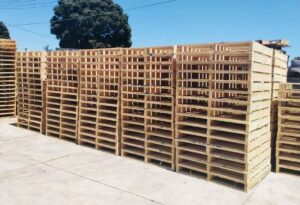
The Different Types Of Pallets
The storage and transport needs of a warehouse necessitate the use of high-quality pallets.
Wooden pallets are highly recommended. It can be difficult to figure out what kind of wooden pallet you need because there are so many distinct styles available.
Learning about the many options and their applications will help you choose the best one. Read on to find out more about pallets and the various functions they serve.
Block Pallets
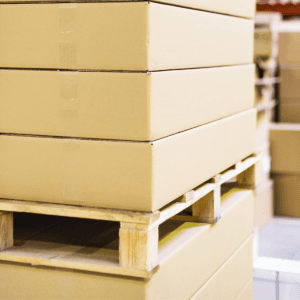
The block pallet can be loaded from any one of four sides. This describes the pallet's design, which makes it possible to load and unload it with a forklift from any of its four sides. The unit load of this pallet is supported by blocks of solid wood and occasionally wood in the wooden variant of this pallet. It has a standard configuration of nine blocks and seven deckboards on top.
Between the deckboards and the blocks are thinner pieces of wood called stringer board, which form a mat with the top boards. Typically, a block pallet will be as long as the stinger board plus the width created by the deckboards. Block pallets are sometimes built with bottom deckboards that are ideal for transporting and storing heavy items.
Plus, a forklift can pick them up from any side, so they're almost made to be moved that way. The bottoms of block pallets can be made in a variety of configurations to accommodate varying levels of support and forklift access.
Different types of foundations are perpendicular, parallel, overlapping, and perimeter. Because of their high quality and value, you should always ask for them back after using them in a package.
Stringer Pallets
Stringer pallets are two-way pallets, so that forklifts can access them from either end. The name "pallet" comes from the two "stringers" that connect the deckboards at the top and bottom.
The length of the stringer board comes first when detailing the dimensions of the pallet, followed by the length of the deckboards. Like the block pallet described above, stringers can have multiple access points.
They have four-way forklift access thanks to their notched stringers. When using a pallet jack, only two of the four entryways to a typical stringer pallet will be accessible. In order to save money on pallets for shipping a partial unit load, stringer pallets are recommended. These are also frequently utilised for deliveries where the return of the pallet is not essential.
Double-Face Pallet
It is the deckboards on both the top and bottom of the pallet that give the double-faced pallet its name. By adding a layer of deckboards to the bottom of a pallet, you can boost its overall strength and distribute the load's weight more uniformly over the pallet.
This is helpful for preventing mishaps like a load falling and breaking a pallet, which could lead to damaged goods.
There are both reversible and non-reversible double-faced pallets on the market. The bottom of a reversible pallet can be used to support a weight in the same way as the top, so either side can be placed down.
Only one side of the deckboards on a non-reversible pallet can be used to support the weight.
The double-face shape of a pallet is superior for transporting heavy items. Not only will it be stronger, reducing the possibility of the pallet breaking, but it will also be easier to set down without worrying about which side is up. A single-faced pallet may still be suitable for your purposes; just remember to take into account the weight of the typical loads you'll be transporting.
Winged Pallet
The winged pallet should be included while discussing the many types of pallets and their applications. The deckboards' overhang onto the stringers is a defining characteristic of this pallet design.
These deckboards generate what is known as a "wing," an overhang. All the boards on a pallet should be square, and the stringers and blocks should be arranged in a straight line beneath them.
Winged pallets can be divided into two categories. The deckboards on a single-winged pallet are limited to the top surface of the pallet.
The wings are there to increase the pallets' load capacity in comparison to standard pallets. The stringers of a winged pallet are moved closer to the centre of the pallet, allowing for more even weight distribution.
More goods may be loaded onto each pallet because of its larger footprint. Because of this, winged pallets are helpful when carrying big items.
Solid Deck Pallet
A solid deck pallet is the final type of wooden pallet available. This type of pallet eliminates the need for deckboards altogether in favour of a single huge sheet of wood (usually plywood or OSB) that is solid throughout.
Standard wooden pallet components like blocks and bottom deckboards are still used beneath the single sheet of wood. A solid deck pallet's smooth exterior makes it convenient for professionals to clean and move the pallets around. A deck pallet can be useful if you have a number of tiny things in your load that could be lost via the gaps between standard deckboards.
Finding a reliable quality pallet distribution firm is essential if you want to source the wooden pallets your business requires. Visit First Alliance Logistics Management instead of wasting time wandering around aimlessly. We are a leading provider of pallet distribution services. First Alliance Logistics Management is here to help as your one-stop-shop for all of your wooden pallet requirements.
Different Pallet Sizes To Choose From
The first step is to become familiar with the various pallet sizes. Although logistics experts frequently refer to 48x40s as "standard pallets," this designation can be deceptive. What is most frequent in one area may nevertheless have use in another. In reality, several industries have their own standards that work for various other uses. Here are the most frequent alternatives for shipping pallet size, so you can make an informed decision.

GMA Pallets
The GMA pallet is the standard for international shipment. The Grocery Manufacturers Association, or GMA for short, is the regulatory group that establishes standards for foodstuffs and drinks. The conventional load capacity of a GMA pallet, 48"x40", is usually sufficient.
The maximum load for these GMA pallets is over 2,800 pounds. In addition, they feature four-way access, which makes them perfect for warehouses. Since 48"x40" platforms are so convenient to use, they are not just useful in the supermarket industry.
Popularity-wise, retail pallets are analogous to GMAs, but their dimensions are different. When shipping smaller quantities, a 48"x20", 20"x48", or 20"x24" pallet is recommended. Smaller loads can be transported more efficiently and with less wasted space using retail pallets.
Drum Pallets
Drum pallets are often the largest footprints available. Because of their size (48"x48"), these platforms are commonly used to handle 55 gallon drums, hence the name. Drum pallets are frequently used in the petrochemical and petroleum industries. These containers are also useful for transporting waste and by-products from the laboratory.
Alternatively, you might find 44"x44" drum pallets. Double stringers can be added to either version to increase its durability. Drum pallets are the ideal choice when you need a huge pallet that can handle a lot of weight.
Dairy Pallets
Dairy pallets are the perfect size and shape if you need square pallets for shipping. Their most prevalent application is as shipping platforms for milk cartons, hence the name for these 40"x40" platforms. However, dairy pallets satisfy most transit and storage needs for food and beverages, making them exceptionally flexible solutions.
Military Pallets
When transporting sensitive materials and equipment, the United States Armed Forces relies on custom-made military pallets. Platforms are typically 40" x 48" to accommodate standard GMA seating. Pallets measuring 35" x 45.5" are a common size for military-grade pallets.
The military frequently uses air transport to transport supplies. Military pallets, therefore, need to be portable, sturdy, and simple to operate. The 463L freight pallet is the benchmark in the business; it has a weight capacity of over 10,000 pounds. These pallets are unlike any others since they are encased in aluminium, which greatly improves their durability.
Automotive Pallets
Unique products may necessitate customised pallet sizes for transport. We recommend using automobile pallets for this purpose. The 48" x 45" decks can carry automobile components without breaking down from the weight or chemical corrosion.
Pallets used in the automotive industry are not exclusive to that sector. They are suitable for transporting dangerous goods since they are impervious to chemicals and other harsh substances. These platforms, typically made of plastic, are also useful for transporting food and drinks.
The Importance of Wooden Pallets: Why Crate N Pack Leads the Industry
Wooden pallets may seem like a simple product, but they play a critical role in the global supply chain, ensuring goods are safely and efficiently transported across industries. From small businesses to large-scale manufacturing, wooden pallets are indispensable. In this blog, we’ll explore why wooden pallets are so important and why Crate N Pack Solutions is your go-to supplier for high-quality, custom wooden pallets.
1. Versatility Across Industries
Wooden pallets are used in virtually every sector, from retail and agriculture to heavy machinery and exports. Their design allows for easy stacking, storage, and transportation, whether by forklift, pallet jack, or automated systems. No matter what industry you're in, wooden pallets make moving and storing products simpler, safer, and more efficient.
At Crate N Pack, we offer a range of wooden pallets to meet diverse needs. Whether you need standard-sized pallets or customised designs, we have the expertise to deliver high-quality products tailored to your specific requirements.
2. Cost-Effective and Reusable
One of the main reasons wooden pallets are widely used is their cost-effectiveness. Compared to plastic or metal alternatives, wooden pallets are significantly more affordable while still offering great durability. Their strength makes them suitable for reuse over multiple shipping cycles, which helps businesses save money over time.
At Crate N Pack, we pride ourselves on offering affordable, durable wooden pallets without compromising on quality. Our pallets are built to last, giving you the best value for your money.
3. Eco-Friendly and Sustainable
Sustainability is becoming increasingly important, and wooden pallets and export pallets are one of the most eco-friendly packaging solutions available. Made from renewable resources, wooden pallets can be repaired, reused, and recycled, reducing waste and conserving resources. Even when a pallet reaches the end of its life cycle, it can be ground down and repurposed for other uses, such as mulch or biofuel.
At Crate N Pack, we are committed to sustainability. We source our timber from responsibly managed forests and offer pallet recycling services to help reduce your environmental footprint. We also provide heat-treated wooden pallets that meet ISPM-15 standards for export, ensuring compliance with international regulations.
4. Strength and Durability
Wooden pallets are known for their strength and ability to handle heavy loads. Whether you're transporting fragile items or heavy machinery, a well-constructed wooden pallet provides the support and stability needed to prevent damage during transit. Their rugged build makes them ideal for handling rough conditions and long-distance transport.
At Crate N Pack Solutions, we specialise in building custom wooden pallets that can withstand the toughest environments. Whether you need pallets for local distribution or export, our expert team ensures every pallet is built to handle the job.
5. Customisable for Specific Needs
Not all products are the same, and that’s where the flexibility of wooden pallets comes in. You can customise wooden pallets in terms of size, design, and load capacity to suit your specific requirements. Whether you need a pallet that can hold delicate equipment or withstand heavy loads, wooden pallets can be tailored to meet your exact needs.
Crate N Pack excels in customising pallets for businesses of all types. With our quick lead times and ability to create bespoke designs, we make sure you get pallets that fit your needs perfectly—without the long wait.
6. Improved Safety
Using the right type of wooden pallet enhances workplace safety. Properly designed pallets reduce the risk of items shifting or falling during transit, which can prevent accidents and injuries in warehouses or on shipping docks. Wooden pallets also provide a stable base for stacking goods, keeping them secure.
Crate N Pack Solutions takes safety seriously. We design and manufacture pallets that meet strict safety standards, ensuring your products and team are well-protected. Whether it's heavy machinery or fragile items, our wooden pallets provide the stability you need for secure transport.
Why Choose Crate N Pack for Wooden Pallets?
At Crate N Pack Solutions, we nail it every time—our wooden pallets are no exception. Here’s what sets us apart from the competition:
- Custom Solutions: We create pallets that are designed for your unique needs, from size to load capacity. Whatever your requirements, we can build the perfect solution.
- Fast Lead Times: We understand the importance of time in business. That’s why we offer fast, efficient production to ensure you’re not left waiting for your pallets.
- Sustainable Practices: We care about the environment, which is why we use sustainably sourced materials and offer recycling options to reduce waste.
- Expert Craftsmanship: Our team of skilled professionals ensures every pallet is built to the highest standards, delivering quality you can trust.
- Competitive Pricing: At Crate N Pack, we offer great prices without sacrificing quality. Our wooden pallets are durable and affordable, providing excellent value for your business.
Conclusion
Wooden pallets are more than just a tool for transportation—they are the backbone of modern logistics, helping businesses move goods efficiently and safely.
At Crate N Pack Solutions, we understand the importance of high-quality wooden pallets, which is why we offer customisable, sustainable, and durable options to meet your needs.
With our expert team, fast lead times, and commitment to quality, we stand out as the best wooden pallet supplier in Australia.
For more information or to discuss your pallet needs, speak to the experts at Crate N Pack Solutions today on (03) 8759 1696.
We’ll help you find the perfect solution that fits both your requirements and your budget.
Frequently Asked Questions
A pallet (also called a skid) is a flat transport structure, which supports goods in a stable fashion while being lifted by a forklift, a pallet jack, a front loader, a jacking device, or an erect crane. A pallet is the structural foundation of a unit load, which allows handling and storage efficiencies.
Wood Pallets are about 3 times less expensive than plastic pallets and at least 10 times more widely used. They hold more weight than plastic, can be used for weights between 1,500 and 3,000 pounds, and they can be easily repaired and reused.
Wood pallets are flat platforms made of lumber, such as pine or hardwood, durable and long-lasting materials. Wood pallets are often used in manufacturing, warehousing, and shipping, as they provide an efficient and cost-effective way to transport goods.
A pallet is a wooden platform on which goods are stacked and has two open ends that allow the entry of the forks of a lifting truck so the pallet can be lifted and moved about easily.
The future of wood pallets is about making the most of existing resources and working to eliminate the waste wood platforms create. Pooling models and standardization will help to improve sustainability in the supply chain, as will more environmentally friendly composite materials.


